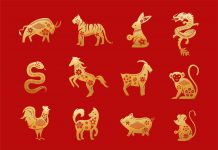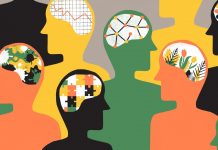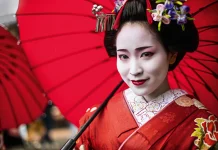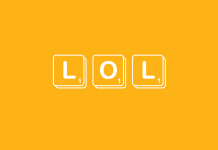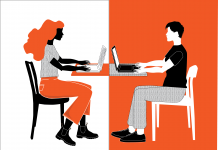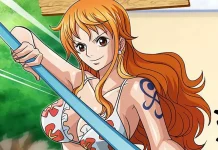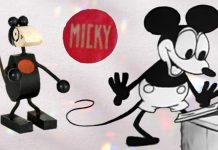To learn the Tarot, the first step is to become familiar with the meaning of the 78 Tarot Cards. “Oh no ! Do I really have to memorize the meaning of 78 Cards, right side up, upside down? ” Not at all. Discovering the meaning of the Tarot Cards does not mean having to memorize the “unique and definitive” definitions of an expert. It does not mean knowing everything about symbols, the history of Tarot or Numerology before daring to make a Draw.
What you are trying to do is build an intimate connection with the Cards and make them an extension of your intuition and your own thoughts. You will discover what they mean to you, depending on your sensitivity and your experience to interpret your Prints with confidence!
Each tarot card has its own energy and this energy, everyone is able to feel it. The “traditional” meaning of the Map nuances and deepens your feeling, but does not replace it. You have to start from what the Cards tell you “to you”, from what they evoke to you, from what you feel when you see them. If you wish, you can enrich this perception with additional information. You then construct the meaning of the cards which resonates and illuminates the best interpretation: yours!
Table of Contents
What are Tarot cards
No one really knows who created the first tarot cards, no one really knows where they came from and no one knows exactly which century they belong to, despite everyone saying they know everything about them. More or less they appeared around the year one thousand, between the Middle Ages and the Renaissance, in the darkest period of humanity, where there was an absolute need to turn to something or someone imponderable to be able to regain optimism and self-confidence. themselves.
If we analyze one by one the meaning of the 78 cards of the Tarot, we immediately realize the immensity of their geometric, mathematical, symbolic construction, so much so that we understand that a single person cannot have created them. They are truly a wonderful and mysterious construction.
The history of Tarot Cards
Let’s start by recalling that the playing cards are probably of Chinese origin and appear in the 7th century. Europe will not discover them until the 14th , through the Arabs or Asian merchants. The first published in Europe made use of so-called “Latin” signs , or colors : sticks, coins, swords and cups , but each country or region quickly developed its specific features. Thus, the French brands divide the game into: spades, hearts, diamonds and clubs, while the German brands consist of: hearts, bells, acorns and leaves.
Like the regular deck of cards, tarot has four signs, usually Latin, each containing ten point cards, numbered from ace to ten. Unlike the classic card game which generally has three, tarot offers four figures: jack, knight, queen and king. However, what makes it special is above all the addition of several assets. These additional cards will be qualified, in the 19th century, blades or arcana, but this late designation is linked to their recycling in esotericism, as well as the division into so-called major and minor arcana. Purists are therefore more likely to speak of triumphs (from the Italian trionfi) or of assets.
First mentioned in 1440, this game was first called “carte da trionfi”. It was not until the following century that the Italian and French terms Tarocchi and Taraux respectively appeared, the etymology of which remains unknown to this day. According to the criteria used to qualify a “tarot” card game, historians prefer the date 1425 or 1441 . In any case, this game would have been born in northern Italy, probably at the court of Philippe Marie Visconti, Duke of Milan.
Born in the Italian princely courts, tarot quickly spread throughout Europe. The cards were first xylographed, before the invention of printing, in the second half of the 15th century, favored their distribution. It then becomes a very popular game. This is also the time when tarot as we know it is taking shape: our count of 78 cards, including 22 trumps, seems to have settled in the second half of the 15th century. However, these assets still retain, for a time, a floating order, the figures occupying, depending on the games, different places.
The tarot arrived in France, with the wars in Italy, at the very end of the 15th century. Legend has it that the first French tarot was produced for King Charles VI by Jacquemin Gringonneur in 1392, which would delay the appearance of the tarot game by as much.
The turning point took place in 1781 when the Frenchman Antoine Court de Gébelin, in his work Le Monde primitif, assigned esoteric content and an ancient origin, precisely Egyptian – which is totally false, but it must be said that Egypt is then very fashionable.
The meaning of Tarot Cards
Many wonder what the true meaning of the tarot is and for this reason we have set ourselves the goal of providing you with various information and indications on the cards and the various symbols that they can hide. In this way we want to clarify some aspects that are often overlooked and for which it is easier for doubts to arise.
The tarot cards are a deck of 78 blades divided into major and minor arcana . These in turn are made up of 22 and 56 cards (in this case divided in turn into four groups represented by the suits of the Italian tradition).
Each of these cards carries with it a certain image that can take on very different meanings depending on the situation. The task of the fortune teller is in fact to understand the tarot symbols well in order to interpret them also based on the situation and the person who requested the consultation.
The figures in the tarot are many and each one serves to indicate a particular aspect of life, of the past, of the present and of the future. For example, the major Arcana are considered the most powerful because they can provide many clues about one’s person. The reading of the Major Arcana is indeed very useful to understand more about themselves and their lives. The symbolism of the tarot cards must be interpreted carefully and with the right knowledge, otherwise you can get a wrong response that will not be of any benefit.
The interpretation of Tarot Cards
The Tarot serves as a tool of great metaphysical and psychological strength. Following the laws of gambling, some people take three or more cards, but three is enough to create a sentence that can be read. But only if you have really studied them can they be read as a complete sentence, and each of these scholars can read it in their own language, whether it is English, Italian, Spanish, French or whatever.
THE MAGICIAN

A magician or magician, standing in front of his work table, is pictured raising his magic wand. Various objects are placed on the table, and they are all attributable to the suits of the tarot cards. On the magician’s table there are in fact a cup, a knife or a sword, coins, and a stick. In cartomancy the figure of the magician is often associated with the one who reads the cards. In some representations above the magician’s head there is an inverted 8, symbol of infinity, or it is the magician’s hat that recalls the symbol in its shape.
The magician is a figure that represents activity, in fact the magician is the one who is the creator of his own luck, who is enterprising, who acts, and who obtains results. It is undoubtedly a positive card, in fact it represents the one who has capacity and intelligence, uses them, and thanks to his merits achieves results.
It represents: action, ability, resourcefulness, merit, results.
Overturned Card
All the negative aspects of acting are exalted; for example it can mean: acting for evil, too much haste and acting without reflecting, careerism, distrust in one’s own abilities that are there, acting badly, obsession with material results neglecting true values.
THE POPESS

The figure of the popess is of medieval origin. In fact, rumors had spread that Pope John VIII was actually a woman. These rumors, most likely unfounded, took root very well among the population, and contributed to the genesis of this popular figure of a female pope, which we also find in the tarot. The pope’s card represents a woman seated on a throne, dressed in papal or at least sacred clothes, holding the book containing universal knowledge on her knees.
The pope’s card represents serenity, knowledge, faith and fidelity, values and moral rectitude. It can often refer to a reliable and sincere female figure. It is undoubtedly a positive card
Overturned Card
Being pedantic and presumptuous, using information for questionable purposes, is a pitfall on the part of a very intelligent woman.
THE EMPRESS

A young woman in royal robes and jewels, seated on the throne, looks straight ahead. However, the empress of the tarot cards is not as obvious a figure as it might seem at first. It is in fact a known and common subject in medieval times, but not in terms of the representation that is given in the tarot.
The empress indicates stability, strength, and protection. These concepts are well symbolized respectively by: throne, scepter, and shield. The empress represents inner strength, willpower, government of things. It can represent a strong external figure who helps us in a given situation, a support we can rely on, a point of stability and strength in our favor.
Overturned Card
Moral and acting rigidity, excess of drastic measures, excessive protective instinct towards another person, difficulty in maintaining current status.
THE EMPEROR

The emperor is a bearded ruler – seated on a throne – who conveys firmness and power. All the symbols of power are present in the card: the sovereign’s clothing, the long scepter, the shield with the imperial eagle. To give even more emphasis to the concept of power, the emperor is often represented with his legs crossed, a sign that he has no superiors so he must be ready to stand up and bow.
The emperor of the tarot symbolizes strength, authority, security, power, wealth, charisma, virility, awareness, steadfastness. The emperor is the pinnacle of earthly power, and at the same time he is a wise and intelligent figure, often also a righteous one.
Overturned Card
Stiffness, bullying, severity, drasticity, excessive use of force.
THE POPE

The figure of the pope is one of the representations of the tarot that has remained more constant over time and in the various decks of cards. In fact, the pope is practically always represented in the same way: a pope seated on a throne who with one hand supports the crosier, and with the other gives a blessing to the two figures kneeling in front of him. The figure conveys wisdom and respect, but at the same time also awe.
The pope symbolizes selfless good advice, endorsement from others, just success, faithful and loyal person you can count on. The pope can represent an external figure, a mentor, a figure we respect and from whom we should take a good example.
Overturned Card
Seeking too much the approval of others, not making original decisions on your own, always taking sides where the wind blows without having the strength to support our true positions.
In some cases it can also mean excessive moralism.
LOVERS

A loving couple is about to be united in marriage. Their union is sanctioned by a person on earth, and by Cupid in heaven. Cupid is about to shoot his arrow, thus making love triumph. In some depictions of the tarot the hands of the lovers are joined: further symbolism, both Christian and pagan, of the union in marriage.
The symbolism of the card is obvious: love.
Other meanings of the lovers card can be: desire for a true love relationship, physical attraction that turns into spiritual attraction, positive temptations.
Overturned Card
Too much love that is oppressive, non-positive union, separation and breakup, negative temptations, up to infidelity.
THE WAGON

The chariot represented in the tarot is the chariot of triumph, the chariot of victory. A king with a crown and scepter leads the chariot pulled by two horses, returning to the city after a clear military victory.
The chariot heralds success in a very specific matter. Success will be clear and powerful, and will convey full satisfaction and glory.
Overturned Card
Success is a double-edged sword, as the charioteer must be able to drive the chariot pulled by several horses (opposing forces), so success must be managed and guided.
Those who do not know how to lead success, in addition to not deriving satisfaction from it, risk negative effects.
The overturned chariot can also symbolize excessive bragging to others of one’s achievements, generating antipathy or jealousy.
JUSTICE

Justice holds a sword in one hand and scales in the other. The sword symbolizes the justice that men do, and the scales instead refers to natural justice. A reference according to some is to Osiris, who according to legend weighed the hearts of the dead to decide the fate of their souls. The justice of the tarot is seated on a throne and looks straight ahead, impassive. On the sides of the justice there are two columns, or it is the back of the throne which has the shape of two columns.
Justice represents fairness and righteousness, but also reckoning, verification, test passed, virtue.
Overturned Card
Disruption of the balance, injustice, excessive severity, unfavorable evaluation.
THE HERMIT

A bearded old man, wearing a long hooded robe, proceeds with the help of a stick and illuminating his way with a lantern.
The hermit is the symbol of wisdom. The symbolic reference to wisdom is both in the lantern held by the hermit – which illuminates the reality of the facts – and in the figure of the hermit himself. The wisdom of the tarot hermit is also prudence, for example in assessing where you are going and what you are doing. It also means reflection on oneself, and on the situations indicated by the neighboring cards. Desire to find out the truth, search for the truth.
Overturned Card
Excess of prudence, excess of isolation from others, excessive reflection and poor action, imprudence, bad orientation on what you are doing.
Not having yet figured out how things really are, and who to trust.
FORTUNE

Luck – or “wheel of fortune” – is represented precisely by a wheel. This testifies to the very nature of fate, which tends to turn, to be unstable, and therefore to place one person in a position of good or bad luck at a given moment, and subsequently another. The wheel of fortune is surmounted by a figure armed with a sword – therefore one who has power – to whom luck undoubtedly smiles.
This card recalls the precariousness of situations destined to evolve and change. The crucial point is that things can evolve for the better, but also towards worse conditions. The card refers to conditions of precarious balance. In general, luck is a more positive than negative card, in fact change is always a fruitful opportunity for those who know how to seize it.
Overturned Card
Situation changes for the worse, doom. Lack of readiness to exploit change as an opportunity.
THE STRENGTH

A beautiful young woman effortlessly opens her jaws to a lion. There is an iconographic reference to the labors of Hercules. The woman represented on the card has an inverted 8 on her head, a symbol of infinity, or in some cases she has a hat that recalls her shape.
The card symbolizes brute force (the lion) overcome by intelligence. It therefore calls for the use of one’s intelligence to resolve situations, not resorting instead to drastic measures, hasty solutions, or force. The tarot of strength also indicates success in resolving situations thanks to one’s inner strength, courage, and cunning.
Overturned Card
Bad results due to excessive use of force or impulsive reactions, without thinking. Lack of time to reflect – event vanquished – and consequent wrong actions.
THE HANGED

The hanging position of the tarot is that of an ancient form of torture: being hung upside down by one foot, with the hands tied behind the back. The hanged man, however, has an unperturbed face, almost in meditation, which bears pain impassively.
At a first analysis this card seems to convey a negative situation of immobility, but on a closer look it is understood that it is instead the situation of those who do not deepen themselves in efforts that would be useless, and await the change of events in the awareness that the unfavorable situation it is only temporary. The card symbolizes a sacrifice, an unfavorable condition to endure, to achieve a goal. Important efforts are needed, sacrifices, difficult tests will have to be overcome.
It is necessary to make the best of bad luck, as reacting instinctively and wrongly to this temporarily difficult situation risks becoming a permanent condition.
Overturned Card
Bad reaction to conditions of temporary difficulty. Useless efforts to change a situation for which instead there is only one thing to do: wait.
DEATH

We find the well-known image of the skeleton armed with a scythe. Death is the major arcane of tarot number thirteen. The number thirteen according to most ancient traditions is a bearer of misfortune, but there is no shortage of cultures in which the number thirteen is a good omen.
Death symbolizes a phase of what is the cycle of life, a traumatic phase but which precedes a new birth. Such a frightening figure does not therefore take for granted that death is a card bearer of misfortunes, in fact its meaning is mainly that of change, of closing a cycle and consequent renewal. Death means the end of the current situation, perhaps in a traumatic way, and a new situation that follows from it. Death can also be about the end of a negative cycle. Obviously this card, associated with other unfavorable cards, helps to outline a negative picture.
Overturned Card
Bad ending to a situation, misfortunes.
TEMPERANCE

Classical medieval representation of the virtue of temperance: a female figure pouring a liquid from one jar to another. In the tarot, temperance is represented as a winged woman, standing, in the act of pouring a liquid, probably the water of life, between two cups or jugs.
The temperance card invites moderation. As in the past wine was tempered with water, so excesses in life must be avoided. We must seek moderation, self-control, we must relax. Or also: you are taking a situation with the right balance, you have to keep the right balance.
Overturned Card
Lack of moderation, excesses. You are not taking the situation with the right balance, you are having the wrong attitude.
THE DEVIL

Horned devil, with bat wings, and animal legs: disturbing. The devil is placed on a kind of altar, and a face can be seen on his abdomen, testifying to how he is guided by the lower instincts. Two demons are chained to his feet, and the devil holds a kind of scepter or a fiery staff. The arrangement of the figures recalls the pope’s card, in an evil version.
The devil card is the most negative tarot card. It can symbolize evil or danger. Immorality, degeneration, wickedness, and various vices are also associated with this card.
Overturned Card
Pure evil. In some rare cases it can refer to unbridled passion. In other cases it can refer to the end of a dangerous situation.
THE TOWER

A tower struck by lightning that sets it on fire and destroys it. The reference is to the Tower of Babel, symbol of the pride and pride of man who wanted to rise up to compete with the divine, who was demolished by God himself. The card depicts two people who fall into the void following the collapse of the tower.
The tarot tower represents punished pride. It is an unfavorable card, which portends a failure, due precisely to our presumption and pride. We will face severe punishment due to our lack of humility. We have attracted envy and enmity, whether due to our ostentatious success or our ambition, and someone will make sure that it will backfire on us. The tower card can also be just a warning: be careful not to flaunt your success too much, not to be too presumptuous or proud with others, otherwise this will lead to a harsh punishment.
Overturned Car
Strong excess of pride, ostentation, or ambition. Strong enmity from someone who will try in every way to put a spoke in the wheel. Losses.
THE STARS

A completely naked woman, bent over the banks of a lake or river, pours the liquid contained in two jars into the water. The water contained in the vessels is the water of life and high up in the sky seven small stars together with a larger one spread their beneficial influences.
The star chart is undoubtedly positive. We must be optimistic because the stars are with us and are emanating their beneficial influences. We have heaven’s favor and the stars light our way. Fertility of ideas and favorable circumstances. This card has a beneficial influence on surrounding cards and the situations to which they refer. The stars do not necessarily indicate material success in a specific action, rather they tell us that we will find joy, a good mood, that we will be fulfilled and happy. Everything is set up for the best for our happiness.
Overturned Card
Favorable situation that was not taken, opportunities not exploited. Excessive pessimism when the situation is not so serious.
THE MOON

The tarot moon has two dogs under her who are howling at her. The climate is ghostly and dark, just as the moon was considered to be the bearer of darkness and evil influences. Also appears the representation of a shrimp, which with its peculiarity of walking backwards constitutes another sinister and obscure symbol.
The iconography of the card clearly refers to its meaning: there is a sinister and dark atmosphere that is the bearer of deception. If you do not pay due attention you will fall into error, external circumstances are unfavorable, tempting and deceptive. However, it is possible to pass unscathed, but not without attention and skill. The moonlight hides the pitfalls and dangers of uneven terrain, it will not be easy to navigate successfully and not fall into error. Someone is deceiving you or is talking behind your back. Unfavorable circumstances, hidden pitfalls, deceptions, deceptive people, enemies disguised as friends.
Overturned Card
You are being deceived. Very heavy short-term pitfalls.
THE SUN

The sun shines on two children. It is significant that in the order of the tarot the card of the sun comes immediately after that of the moon: the sun returns to shine after a period of darkness.
The light of the sun returns to illuminate our path and to erase the pitfalls of darkness. Now the way is clearer and without danger. A period of serenity and good humor awaits us. After difficult times (the darkness), everything turns for the best. Great personal fulfillment as the positive moment comes after less fortunate moments.
Overturned Card
A negative situation is slow to turn out to be better. It is difficult to draw joy and light-heartedness from situations that are positive.
THE ANGEL

The tarot angel is nothing more than the depiction of the universal judgment, with the angel of the apocalypse marking the final moment in which all will be judged. Trumpets of judgment sound and the dead rise from the graves to face the final judgment.
The angel is a card of renewal, obviously a situation is changing. The situation changes since the moment of reckoning has arrived. We can no longer procrastinate, postpone, but we must face the showdown and its consequences. The angel can also represent the need to free oneself from material obsessions and rediscover the true values that really make happiness. Knots that come to a head, closure of a situation, final judgment.
Overturned Card
Unfavorable showdown. Punishment suffered. Incorrect operation that is discovered and sanctioned. It turns out that reprehensible conduct has taken place.
THE WORLD

A naked or half-naked woman, enclosed within an oval wreath and with one leg slightly bent, holds a magic wand or two in her hand. In the corners of the card, instead, the symbols of the four evangelists appear: an angel (Matthew), a lion (Marco), a bull (Luke), and an eagle (Giovanni).
The world is one of the most positive tarot cards; represents purity and harmony, creation and human knowledge. Goals will be achieved, you will be successful in what you are doing. You will be prolific. Inner serenity will be achieved. We will learn to feel content with our situation and to enjoy what we have.
Overturned Card
We will be successful but not doing it right. Wrong behaviors will be held, but despite this everything will be fine.
THE CRAZY

A wanderer, perhaps a jester, proceeds with the help of a stick while a dog follows him and bites his clothes. That the fool’s card does not have a number associated with it, or at most it is considered the number zero card, underlines its particularity.
The fool’s card can have a double meaning: both positive and negative. The positive meaning is the urge to let go, to live freely. Let’s get rid of the excess of logic, of rationality, and do what we like best. We therefore live “like crazy”, we break the rules that others have imposed and do what makes us feel better, even if it conflicts with common sense; the important thing is that it is positive and satisfying for us. Or also: inspiration and genius (often misunderstood). The negative interpretation of the card, on the other hand, concerns reckless actions, carried out without any logic, “crazy”. Person who acted irresponsibly, who needs to retrace his steps. Or also: little respect for oneself; let oneself be led by events in a passive way.
Overturned Card
Irresponsibility, irrationality, obsession, immaturity, lack of logic, totally wrong instinct acting, lack of guiding values.
Rider-Waite Tarot

British occultist Arthur Waite was a member of the Order of the Golden Dawn – and apparently a longtime nemesis of Aleister Crowley, who was also involved with the group and its various offshoots. Waite joined artist Pamela Colman Smith, also a member of the Golden Dawn, and created the Rider-Waite tarot deck, which was first published in 1909.
At Waite’s suggestion, Smith used Sola Busca’s artwork as inspiration, and there are many similarities in symbolism between Sola Busca and Smith’s end result. Smith was the first artist to use characters as representative images in the lower cards. Instead of simply displaying a group of cups, coins, wands or swords, Smith incorporated human figures into the artwork and the result is the iconic deck that every reader knows today.
The imagery is heavy on kabbalistic symbolism and, for this reason, it is typically used as the default deck in almost all Tarot instructional books. Today, many people refer to this deck as the Waite-Smith deck, in recognition of Smith’s enduring artwork.
Now, more than a hundred years after the release of the Rider-Waite deck, the Tarot cards are available in a virtually endless selection of designs. In general, many of these follow the Rider-Waite format and style, although each adapts the cards to their own motif. No longer just the domination of the rich and upper class, the Tarot is available to anyone who wishes to take the time to learn it.






